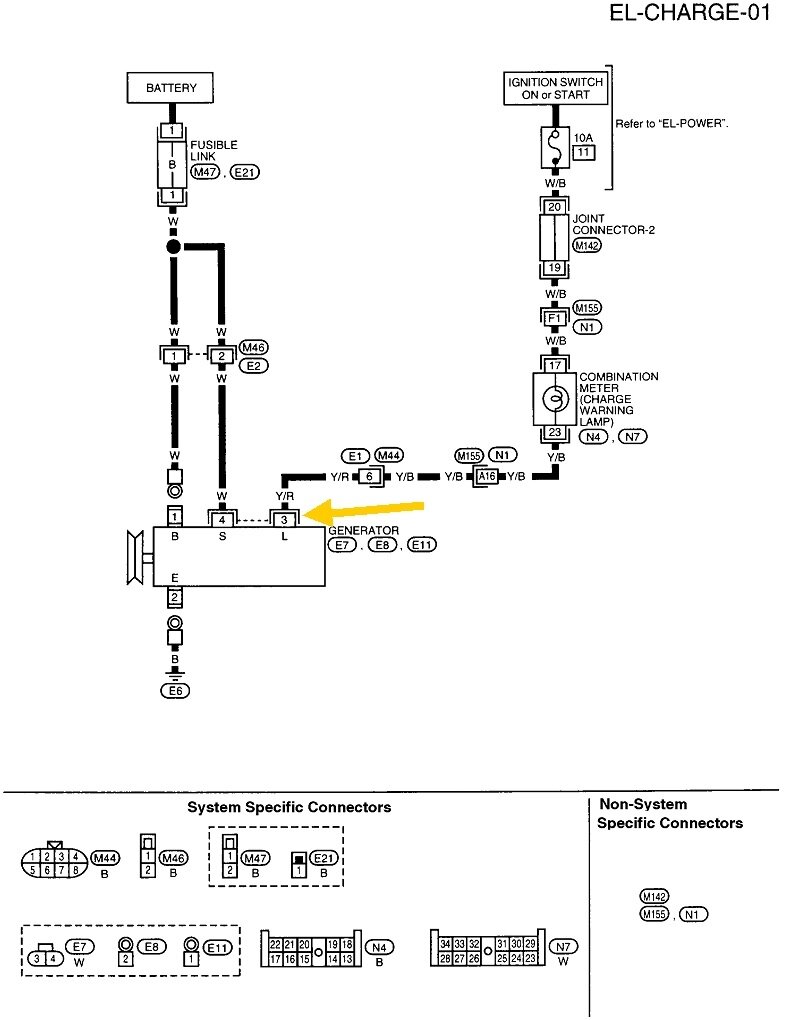This circuit is very basic and straight-forward, so we should be able to figure this out in short order. The first step is to observe the warning light on the dash. It must turn on when you turn on the ignition switch, but before the engine is running. If it does not, we have to look at the yellow / red wire at the generator. That is the turn-on circuit for the internal voltage regulator.
If the light doesn't turn on, back-probe that yellow / red wire at the generator by poking the test probe through the rubber weather seal alongside the wire. These readings are only valid when taken with the plug still connected. I prefer to do this with the engine running so I can monitor charging voltage. Do that with a voltmeter connected right across the battery terminals, or by watching the brightness of the headlights. If you see the voltage suddenly jump up to around 14.0 volts, and the head lights get a little brighter, suspect a poor connection between the two mating terminals for that yellow / red wire on that plug.
Normal operation is to find the warning light on before the engine is running, and there will be roughly 2.0 volts on the yellow / red wire at the generator. Once the engine is running and the voltage regulator has turned on, there should be full system voltage, typically close to 14.0 volts on that wire, and the warning light will turn off.
If the warning light is on with the ignition switch on, but it stays on with the engine running, either the system has not started up, or that yellow / red wire is shorted to ground. Unplug the connector, then recheck the light. If it is still on, that wire is shorted to ground. If the warning amp is only on all the time with the connector plugged in, the voltage on the yellow / red wire will be near 2.0 volts if the system isn't starting up, or 0.0 volts if the voltage regulator is shorted.
If the warning light is working properly, check the voltage on the white wire next, at that connector on the generator. You should find full system voltage there all the time. That's close to 12.6 volts with the engine not running, and around 14.0 volts with it running and the charging system is working. You should see the same full system voltage on the large white output wire bolted to the generator, 12.6 volts engine not running, and 14.0 volts with it running.
Let me know what you find for those voltages.
Image (Click to make bigger)
Friday, June 2nd, 2023 AT 7:33 PM




